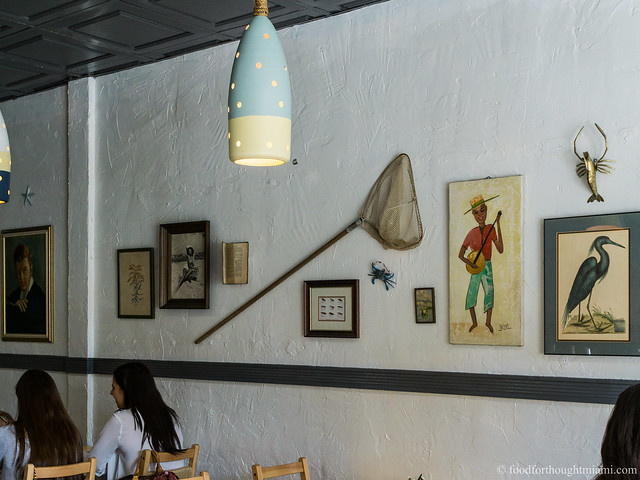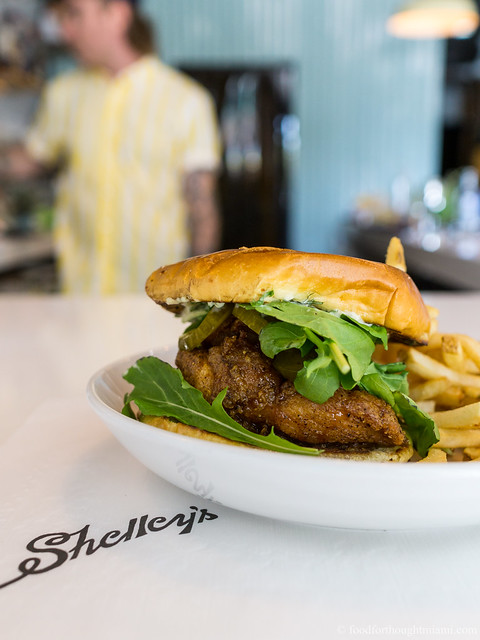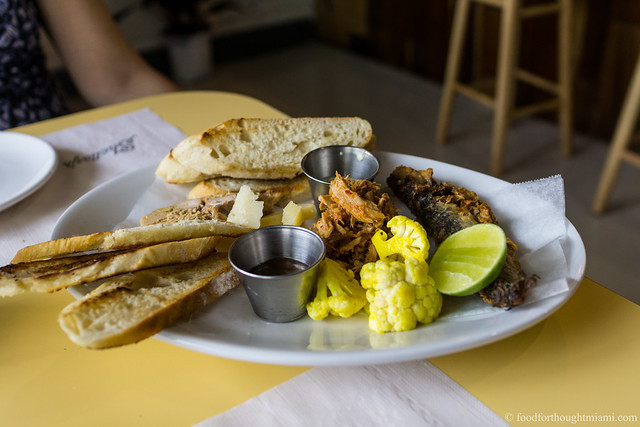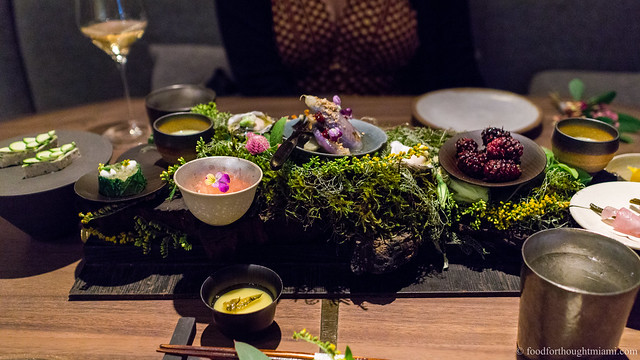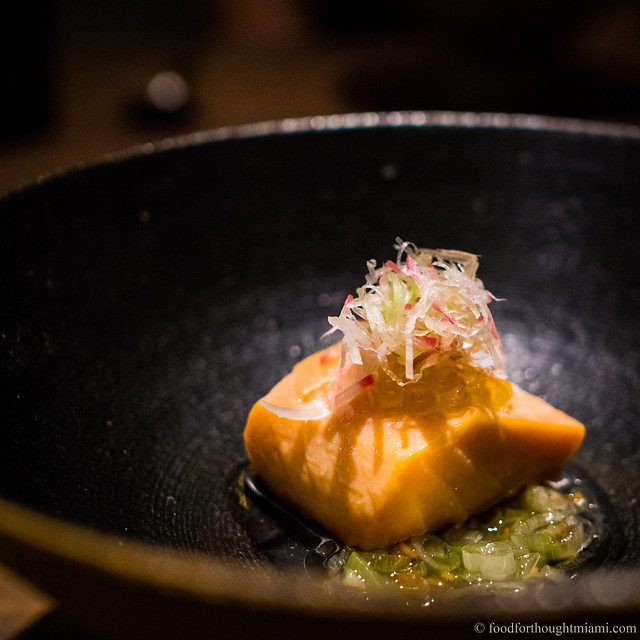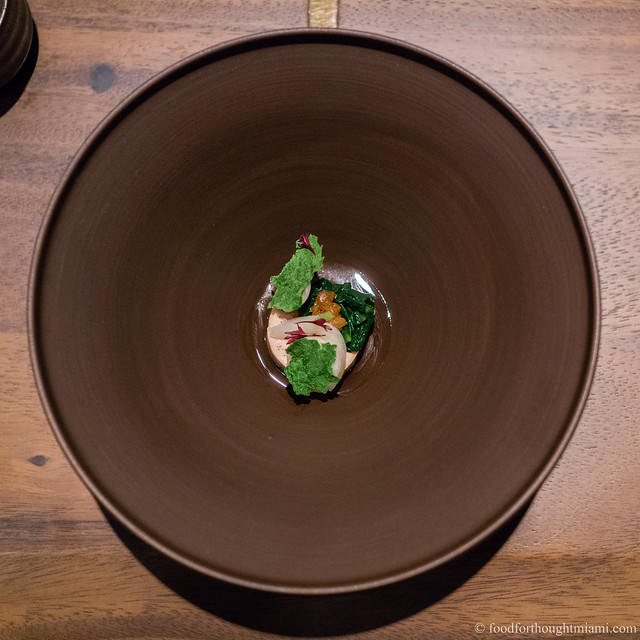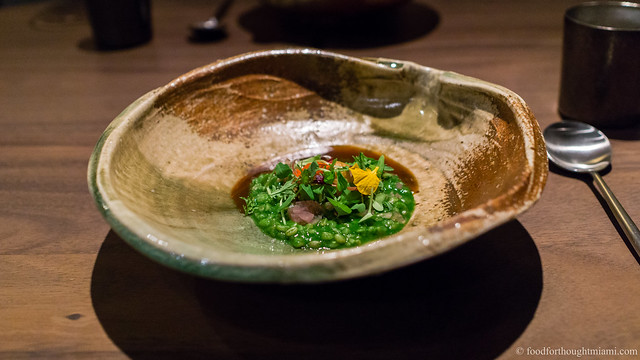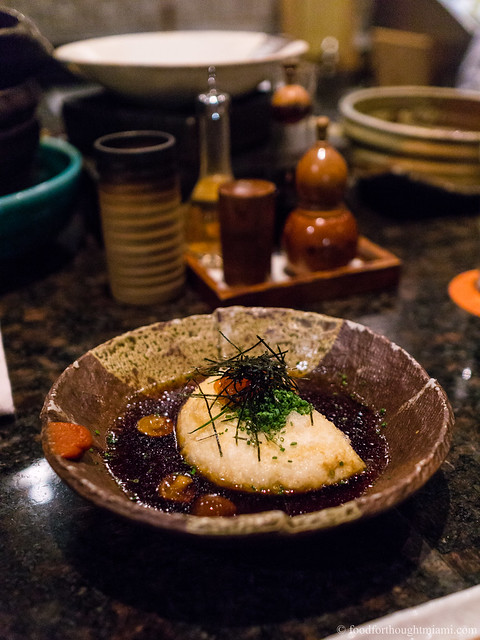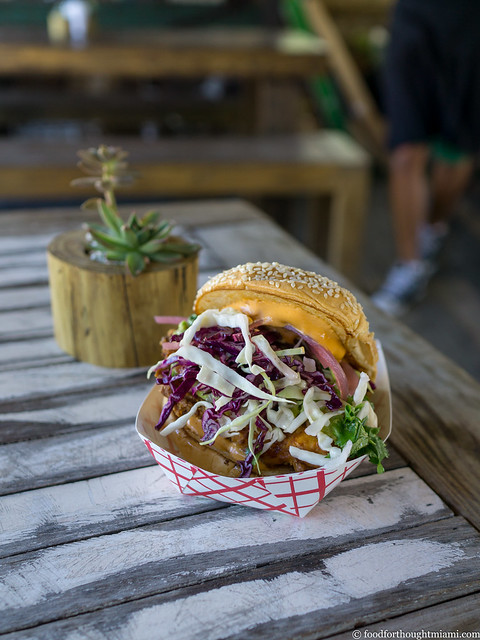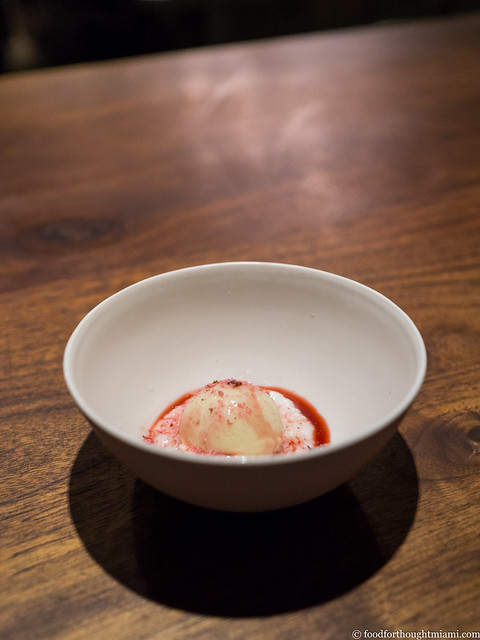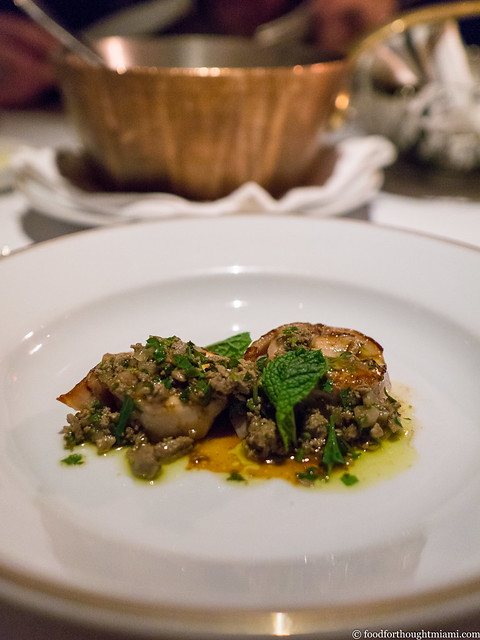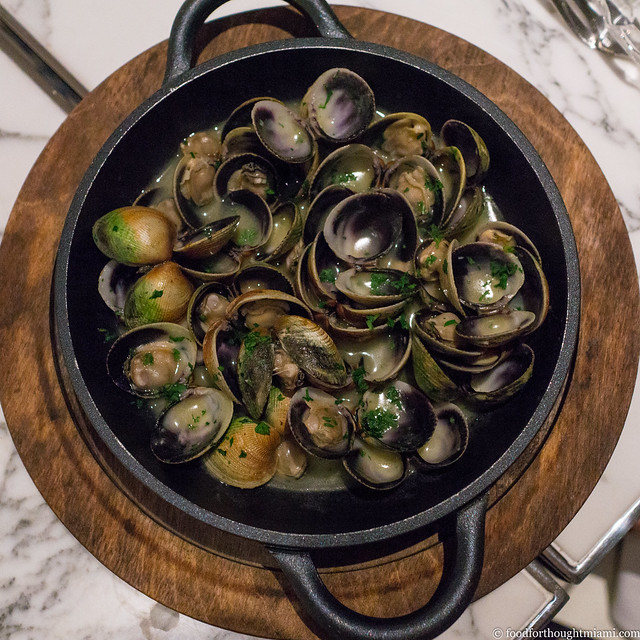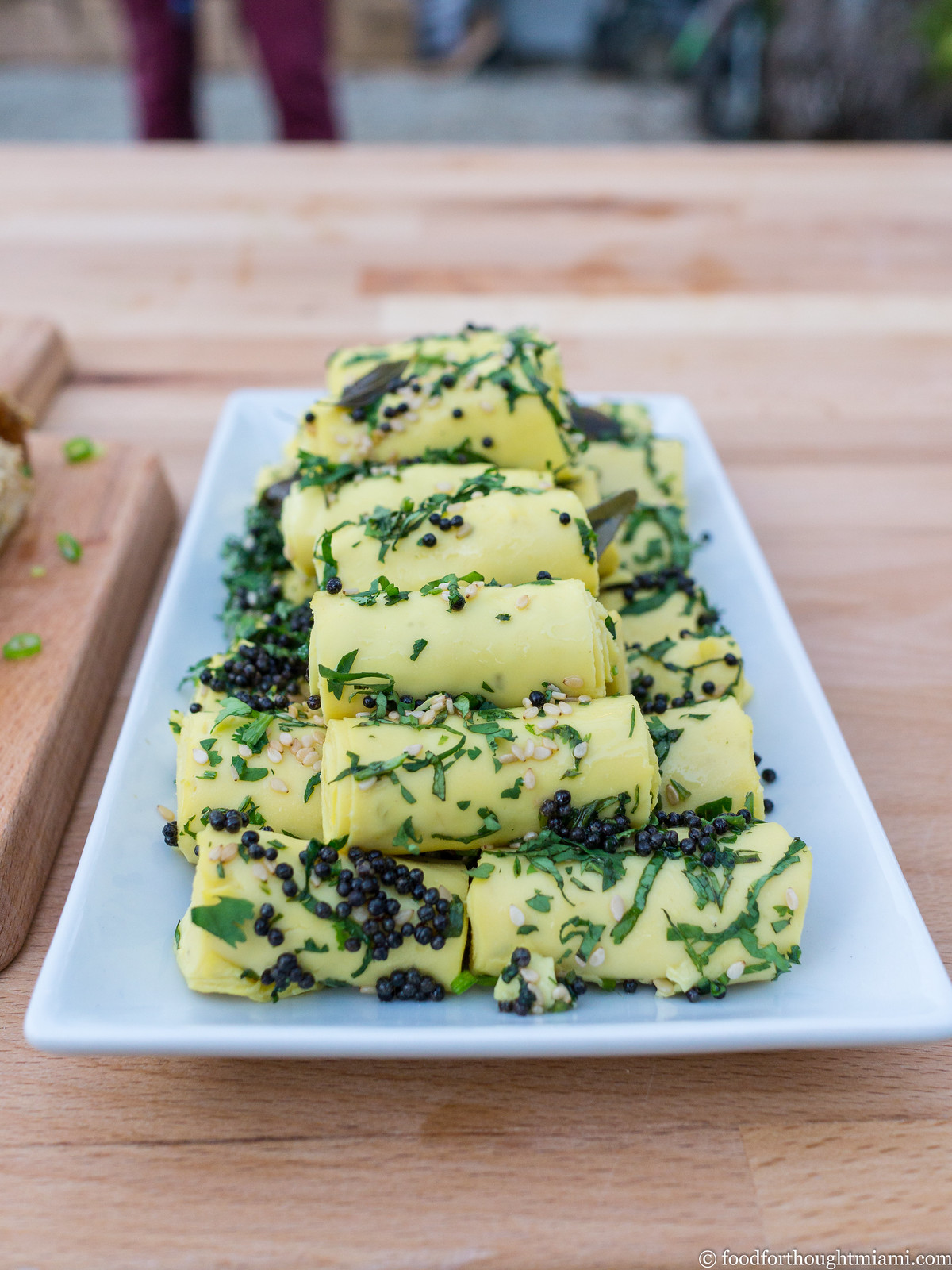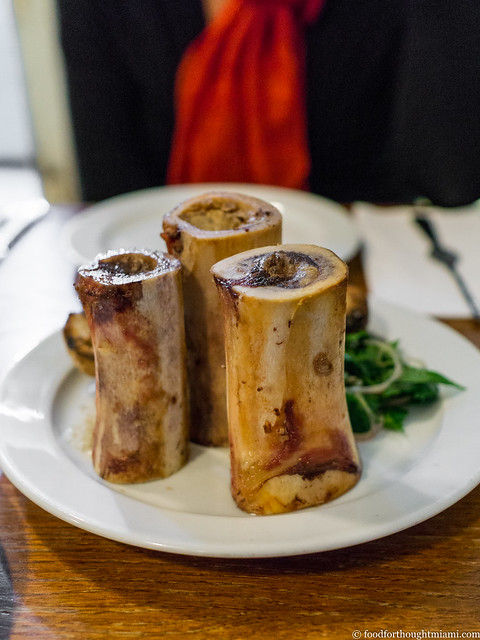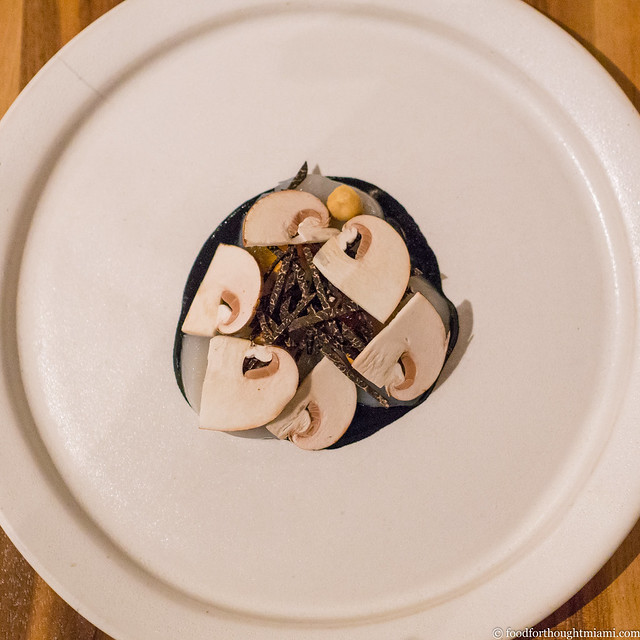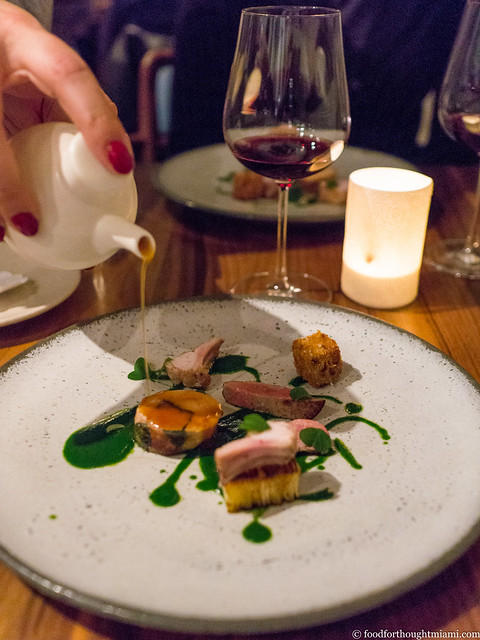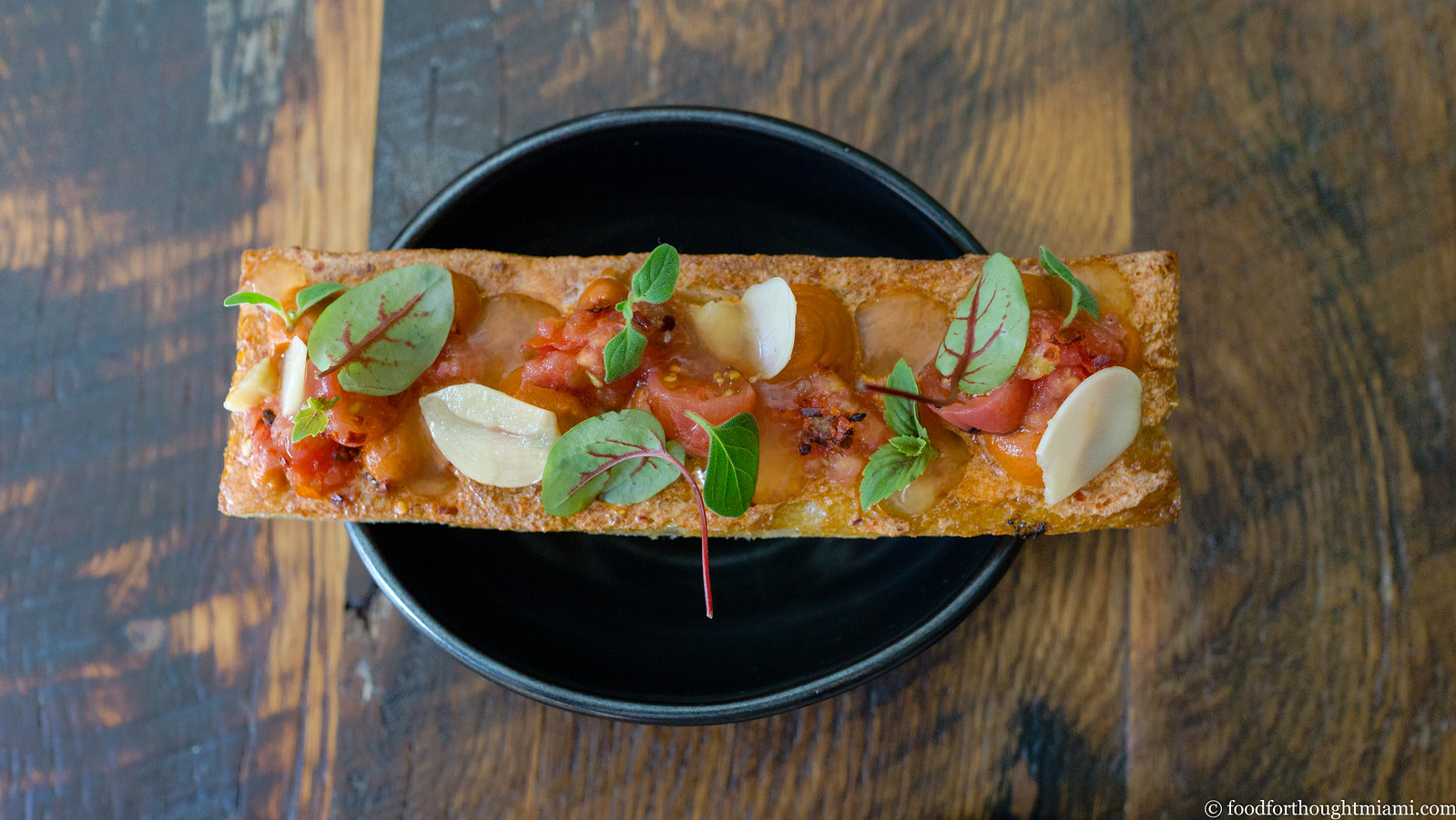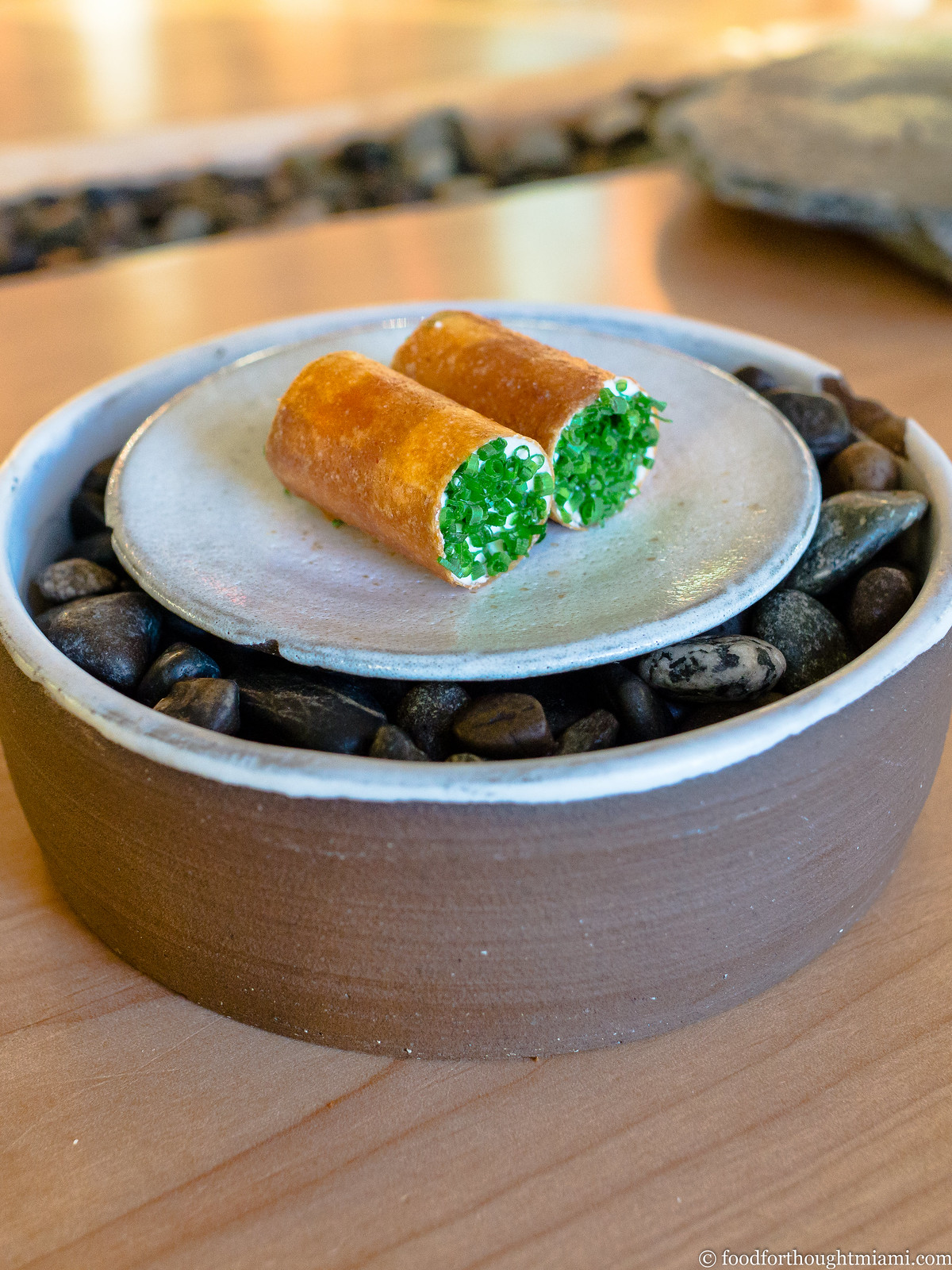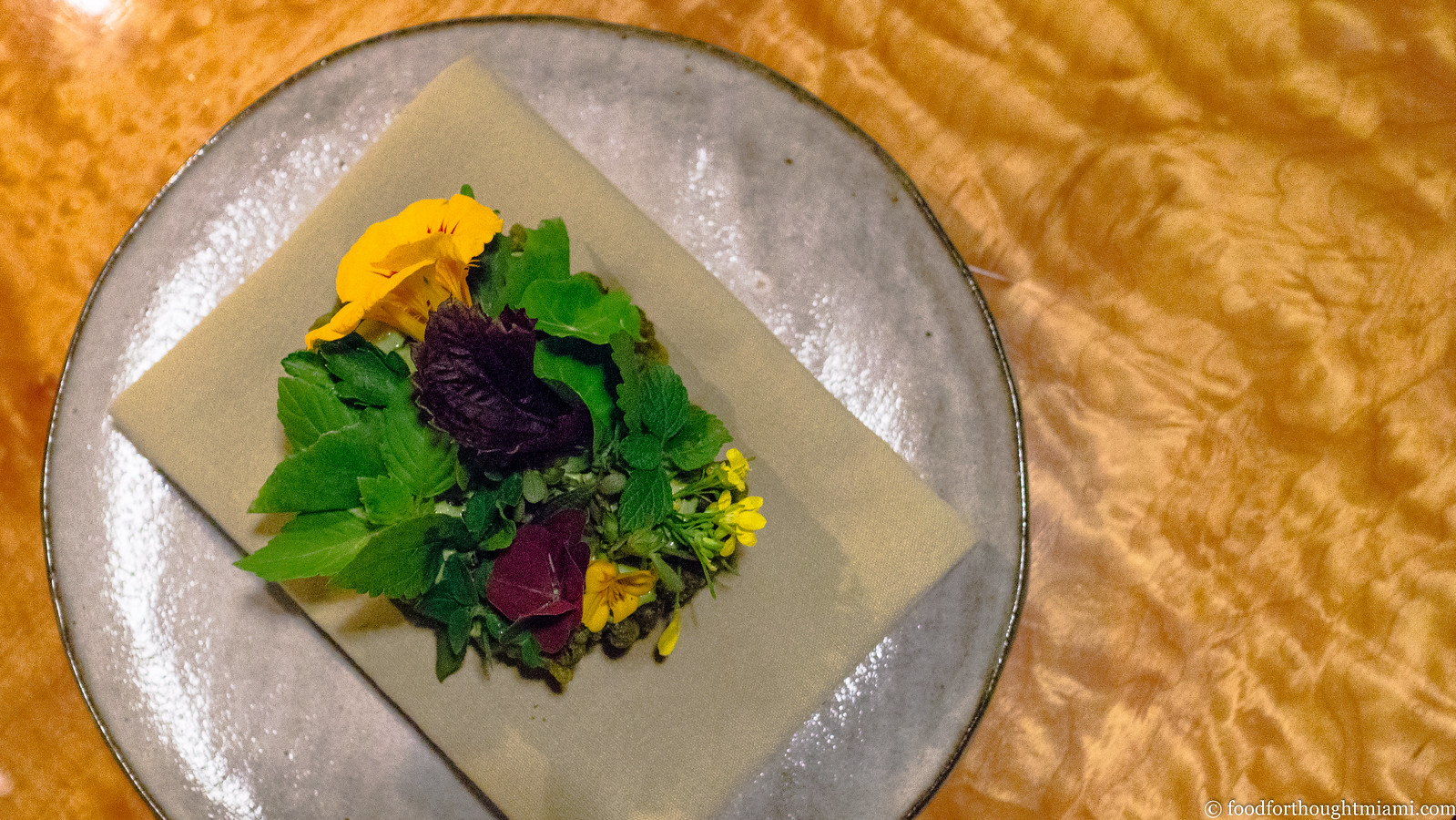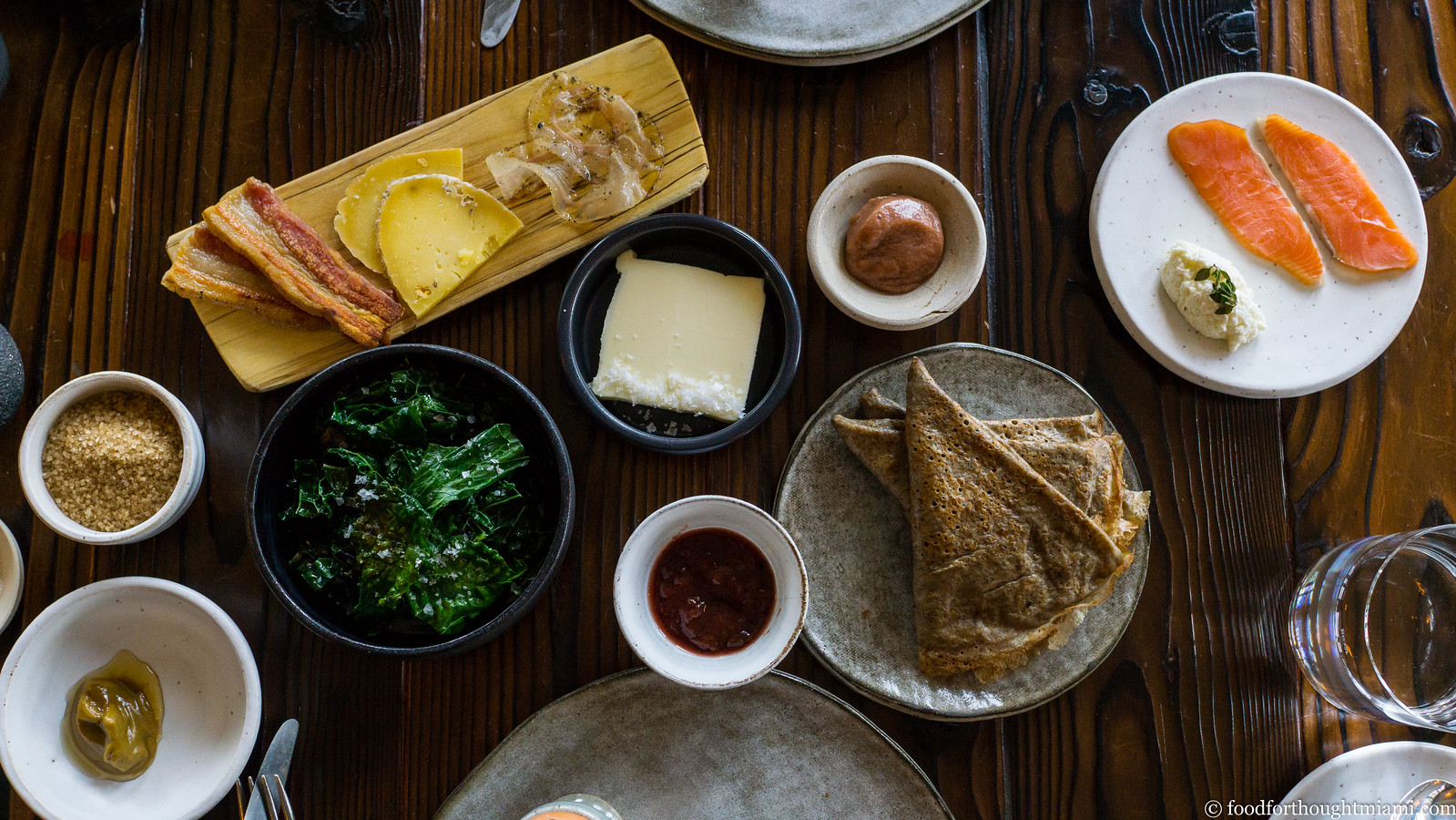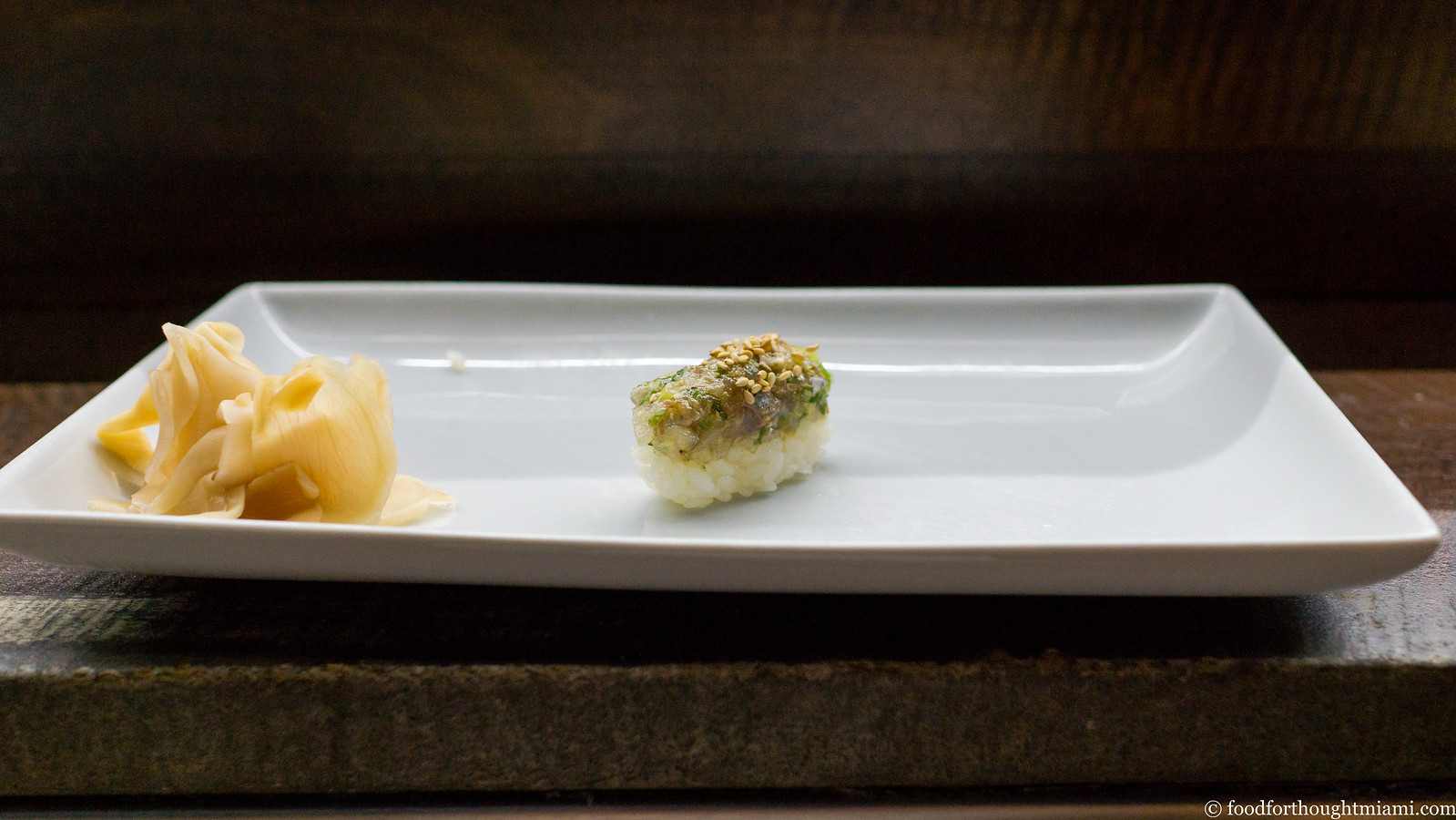We started last Friday with my "
best dishes of 2017: part 1" – a compendium of personal favorites from the past year. We resume here with a highly pedigreed fried chicken sandwich, take quick treks through New York and Philadelphia, then detour back to Miami before swinging out to the west coast.
La Pollita was a short-lived Mexican-themed pop-up run from a trailer in the
Midtown Garden Center by Luciana Giangrandi and Alex Meyer, who had previously worked at such places as
Eleven Madison Park,
NoMad,
Scarpetta and
Animal (
read my thoughts and see more pictures in this
La Pollita flickr set). The trailer is gone but the duo still seem to be kicking around Miami – I'm looking forward to what's next from them.
They've got a short list of tacos, served on fresh tortillas pressed from masa supplied by Miami masa maestro Steve Santana (of Taquiza), and the cochinita pibil I tried was very good. But the standout item was the fried chicken cemita. A hot, crispy, juicy tranche of fried chicken. A crunchy, vinegar-laced, herb-flecked cabbage slaw. A dollop of mashed avocado for some richness. A creamy, mildly spicy Valentina aioli. A sesame-seed flecked bun with just the right heft: substantial enough to be a meaningful component of the sandwich composition and to keep everything together until the last bite; but not so much as to overwhelm the stars of the show. It is just about perfect.
Hey, look, it's another great meal I never got around to writing about, at David Chang's
Momofuku Ko, where the kitchen is run by Sean Gray (see more pictures in this
Momofuku Ko flickr set). I never got to the original incarnation of Ko, legendary for its relatively affordable tasting menus, brutally uncomfortable stools, and impossible reservation system. In its newer digs down a tiny East Village street literally called "Extra Place," it retains some of its original punk sensibilities – the dining counter circling an open kitchen, the cooks presenting the dishes, the hip-hop soundtrack – but it's all pretty buffed and polished, kind of like a
Gucci biker jacket.
The tasting menu still carries a couple of the original Ko classics – the "
Ko egg" with caviar, crispy potatoes, onion soubise and sweet potato vinegar, the
shaved frozen foie gras – but one of my favorites of the evening was a next generation Ko dish. It's deceptively simple: lobes of cold, sweet sea urchin, a scoop of chickpea hozon (a creamy, miso-like fermented paste), a drizzle of grassy olive oil. There's a subtle contrast of marine salty-sweet against earthy salty-sweet; of the delicately creamy texture of the uni against the thicker, peanut butter-y hozon, mirrored by the two orange shades on the plate. Pretty cool.
Another of my favorites at Ko was another deceptively simple composition: a dessert of cherry blossom dusted ice cream, served over creamy, sweet amazake (rice fermented with sake lees or koji), drizzled with a sauce of preserved cherries. It was simultaneously delicate but powerful, homey but elegant.
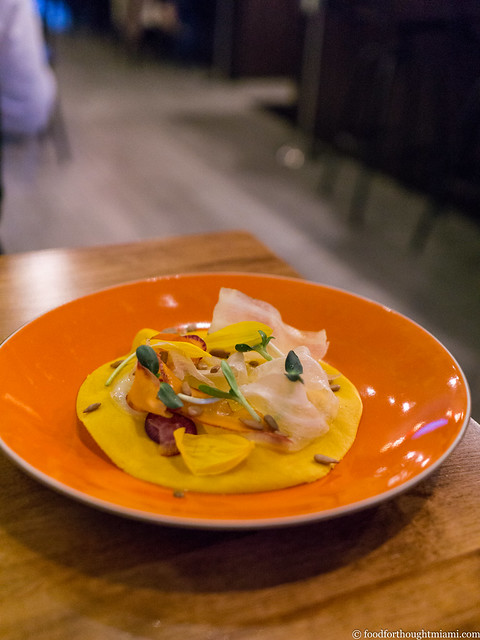 |
| carrot crepe, littleneck clam, sunflower - Olmsted |
Olmsted, Greg Baxtrom's Brooklyn restaurant with a backyard garden that does double-duty as a pre- and post-meal hangout spot, has been much talked about (see more pictures in this
Olmsted flickr set). In a way, all the chatter possibly sets expectations a bit too high, for what is just a really fun, delicious, casual, cozy, clever, relatively affordable neighborhood spot run by someone with chops honed at
Alinea,
Blue Hill at Stone Barns,
Per Se, and
Arzak. The menu changes all the time – they were on a
yakitori bender during our visit, while also serving Hyderabadi inspired
duck chakna, truffle-dusted rutabaga "
tagliatelle," and simple but delicious
sauteed soft-shell crab with pickled peppers and ranch dressing – but this one dish seems to have become a signature, and for good reason. A goldenrod hued carrot crepe serves as the platform for a salad of wispy slivers of multi-colored carrots, petals, sprouts, and sunflower seeds, concealing a rich clam and carrot stew underneath. It's unusual, unexpected, and delicious.
Daniel Rose's path was a somewhat unusual one. The Chicago native was inspired to move to Lyon to study cooking after taking classes at the American University in Paris. After years at the
Institut Bocuse and apprenticeships around France, he opened his first restaurant –
Spring – in Paris. It wasn't until a decade later that he returned to the States to open
Le Coucou in New York with Stephen Starr (see more pictures in this
Le Coucou flickr set). In a way, the place makes it feel like the last couple decades of dining history never happened. There are pressed white tablecloths and long wax tapers on the tables; the menu isn't a collage of small plates, but good old fashioned hors d'oeuvres, poissons et viandes (though a category of "gourmandises" features otherwise uncategorized indulgences like quennelles de brochet and veal tongue with caviar).
But the cooking is more precise, focused, bright and clean than the butter and cream laden juggernauts of the older era that Le Coucou otherwise invokes. And nowhere was that more evident than in a dish called "tout le lapin" (all the rabbit), a production which comes to the table in three different serving vessels (the picture here is better focused, but
this one gives a view of the whole spread). The saddle is rolled and cooked and then sliced into rounds which are seared and browned, then napped with a loose sauce that takes the ferrous richness of rabbit offal, cuts it with an acidic vinaigrette, and brightens it with fresh mint. Alongside is a
gratin dish of the rabbit's legs cooked down with soft, sweet onions. And finally, a
pot au feu of the foreleg, in a golden broth bobbing with carrots and turnips. It's all wonderful.
(continued ...)

